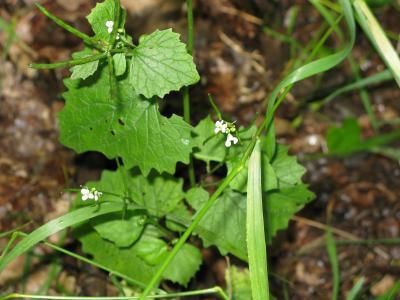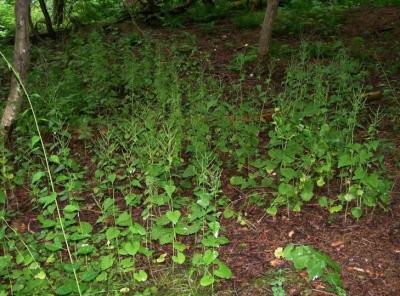PITTSBURGH, PA (March 20, 2014) — Too much garlic mustard growing in the forests of Pennsylvania? Actually, the problem may be too many deer.
A new study published online in the Proceedings of the National Academy of Sciences concludes that an overpopulation of deer is the primary reason garlic mustard is crowding out native plants, such as trillium, which are preferred food for wild deer.
"Our findings show that there is a link between disruption of the native animal community and invasion by non-native plant species," says Carol Horvitz, professor of ecology in the University of Miami College of Arts and Sciences and co-author of the study. "Similar links maybe found in other ecosystems between disrupted fauna and declining diversity of flora."
Deer density in the U.S. is about four to 10 times what it was prior to European settlement of North America. "Our findings imply that management of overabundant grazing animals would be beneficial for conservation of plant biodiversity," says Horvitz, who is also a founding member of UM's Institute of Theoretical and Mathematical Ecology.
The study was initiated in 2003 at the Trillium Trail Nature Reserve in Fox Chapel, Pa., by a team of researchers from the University of Miami and University of Pittsburgh. The project takes a long view on why invasive garlic mustard plants thrive to the detriment of native species.
Garlic mustard (Alliaria petiolata) is a plant native to Europe and Asia, and is inedible by deer standards. It was brought to the United States—Long Island, N.Y., specifically—in the 1860s for use as a kitchen herb.
Instead, it became a menace, colonizing forest floors in the Eastern U.S. and Canada, and has been found in Washington, Utah, and British Columbia, achieving the dubious distinction of being one of very few non-native plants to successfully invade forest understories. The persistence of garlic mustard greatly reduces forest biodiversity.

This is garlic mustard in its native habitat in Hungary.
(Photo Credit: Carol Horvitz/University of Miami)
To study the effect of rampant deer on trillium and garlic mustard populations, the researchers established multiple 196-square-meter plots in the forest. Half were fenced to exclude deer. Years of observation and hours of statistical analysis later, the team found that in plots where deer were excluded, the trillium population is increasing, and the garlic mustard population is trending toward zero.
"This demonstrates that the high population growth rate of the invader is caused by the high abundance of deer," says Susan Kalisz, professor of evolutionary ecology in the University of Pittsburgh's Department of Biological Sciences and principal investigator of the study. This effect is reversible with deer exclusion. The team's results support "an ecological theory that native species in communities can exert biotic resistance." This means that native plants as a group can successfully compete against invaders. If the native plants are allowed to thrive rather than being consumed by deer, the combined natural competitive advantages of those plants—including trillium—allow them to repel the outsiders.
"When people walk in the woods where deer are overabundant, they don't realize what's missing," Kalisz says. "They don't know what used to be growing there. They don't know that species are being lost and replaced by invaders."
The solution seems simple, then: Reduce deer populations, restore natives and prevent invasion. "It's not simple," Kalisz says. "Deer management policies vary from state to state and deer don't respect political boundaries." Some states keep deer populations low, while others prefer to maintain higher populations to appeal to groups such as hunters. "Yet, deer exact a toll not only on forest species, but also farms, orchards, and even your car and your car insurance rate," Kalisz says.

This is garlic mustard invading the forest in Pennsylvania.
(Photo Credit: Susan Kalisz/University of Pittsburgh)
Source: University of Miami